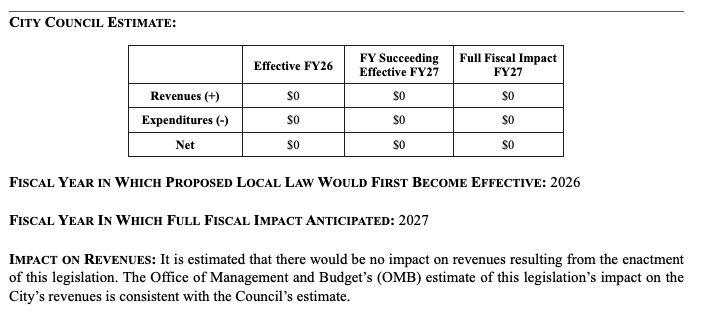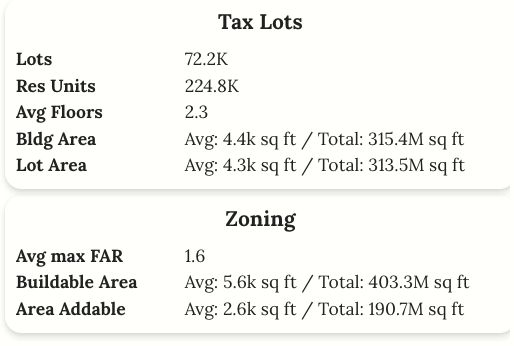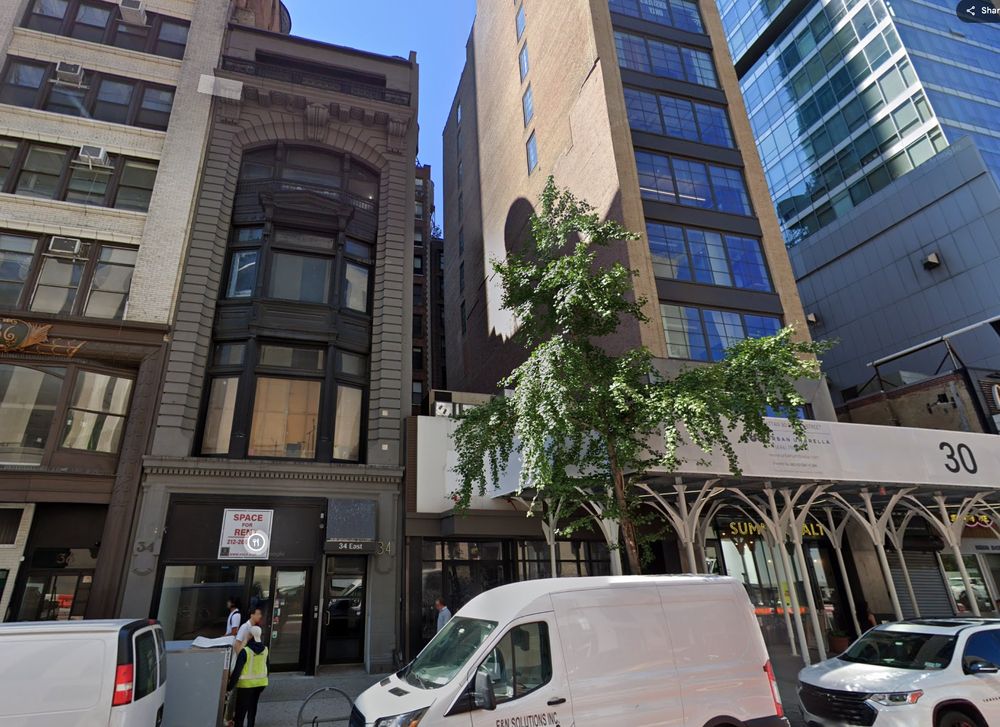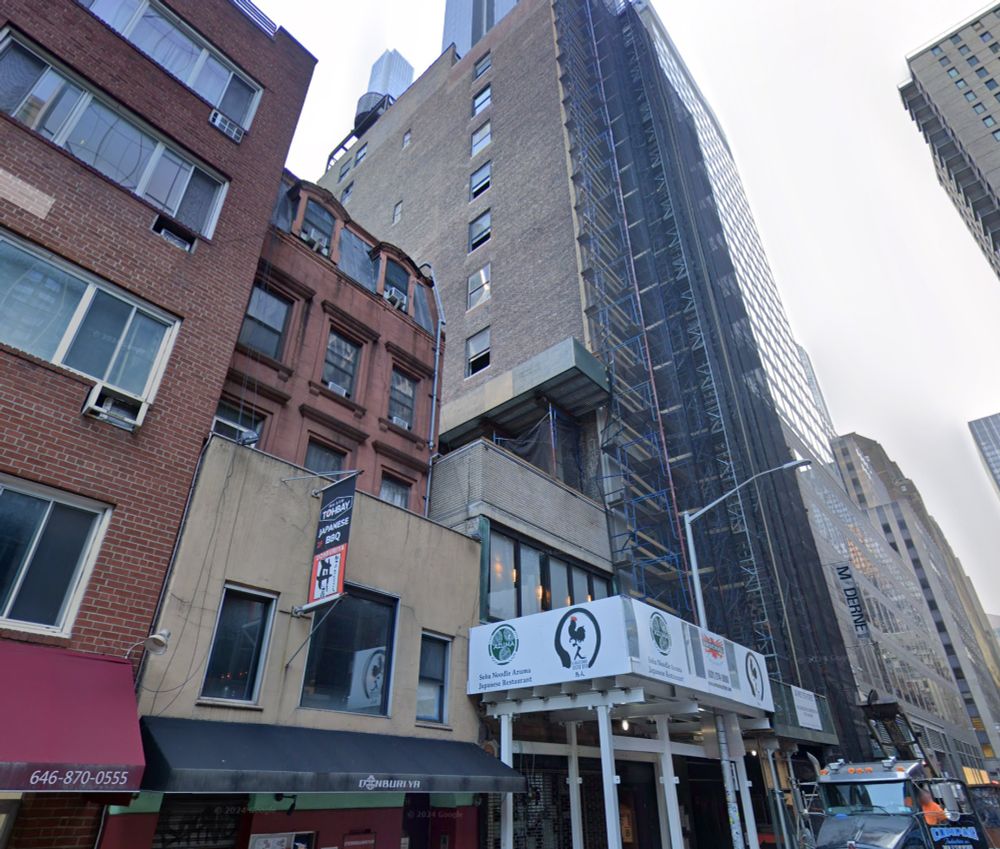In practice, for NYC: New development increases units dramatically:
2.4 => 10.2
Data: PLUTO 2018-2024
In practice, for NYC: New development increases units dramatically:
2.4 => 10.2
Data: PLUTO 2018-2024
- Solar panels: Outer boroughs
- Sheds and scaffolding: Dense neighborhoods
- Plumbing: Manhattan
Filter by anything, and every filter becomes a map.
Coming soon:
citytracker.ai



- Solar panels: Outer boroughs
- Sheds and scaffolding: Dense neighborhoods
- Plumbing: Manhattan
Filter by anything, and every filter becomes a map.
Coming soon:
citytracker.ai
When people worry about parking, they invariably think of "free" street parking, subsidized by the government. Or about requiring parking lots for *others*, to not affect existing street parking.
When people worry about parking, they invariably think of "free" street parking, subsidized by the government. Or about requiring parking lots for *others*, to not affect existing street parking.
Many people doubt that this corridor will have lots of demand.
Commonly cited is this number: "115,000 daily riders".
But ... you're not helping us understand *how* you got to this estimate.

Many people doubt that this corridor will have lots of demand.
Commonly cited is this number: "115,000 daily riders".
But ... you're not helping us understand *how* you got to this estimate.
This just feels like it's not even trying:
1. A delay mechanically reduces transfer taxes
2. Sales prices (=> prop taxes) should go down

This just feels like it's not even trying:
1. A delay mechanically reduces transfer taxes
2. Sales prices (=> prop taxes) should go down
It feels *extremely* impactful, creating a 6-month additional process for *all* sales of buildings with 3 or more units.
But maybe I'm misreading?
Legislation in link (attachment 2)
It feels *extremely* impactful, creating a 6-month additional process for *all* sales of buildings with 3 or more units.
But maybe I'm misreading?
Legislation in link (attachment 2)
Sales, filings, permits.
Work types galore.
Everything's linked and tagged.
Log in to save your searches.
Vast majority of features are free.
citytracker.ai
Track away, and give me feedback!
Sales, filings, permits.
Work types galore.
Everything's linked and tagged.
Log in to save your searches.
Vast majority of features are free.
citytracker.ai
Track away, and give me feedback!
1. Front: To put your garbage bins
2. Height: To make the streetscape pretty
3. Side: To give you space to breathe



1. Front: To put your garbage bins
2. Height: To make the streetscape pretty
3. Side: To give you space to breathe
Showing block-level averages.
First: Number of floors is mostly below 4, often below 1.
Second: The zoned floor-area-ratio is mostly below 4, often below 1.
(you might notice that these maps are similar)


Showing block-level averages.
First: Number of floors is mostly below 4, often below 1.
Second: The zoned floor-area-ratio is mostly below 4, often below 1.
(you might notice that these maps are similar)
Within 0.5 miles of the IBX, we have 225,000 units, with average Floor-Area-Ratio of 1.6
If we doubled FAR and assumed that about 50% of the total FAR gets used over 10 years, we'd add:
200,000 units of housing!
🧵


Within 0.5 miles of the IBX, we have 225,000 units, with average Floor-Area-Ratio of 1.6
If we doubled FAR and assumed that about 50% of the total FAR gets used over 10 years, we'd add:
200,000 units of housing!
🧵
An example: IBX in NYC is estimated to have daily ridership of 115,000.
What assumptions go into this? I went through a 1,077 page report and still don't know.

An example: IBX in NYC is estimated to have daily ridership of 115,000.
What assumptions go into this? I went through a 1,077 page report and still don't know.
But I couldn't find a way to analyze the route on a map.
So I created a dataset of the route and stops. Feedback welcome!
Unofficial and using some hand coding, so give me feedback!
github.com/cgoldammer/i...

But I couldn't find a way to analyze the route on a map.
So I created a dataset of the route and stops. Feedback welcome!
Unofficial and using some hand coding, so give me feedback!
github.com/cgoldammer/i...
This exists, but:
1. Alterations + dominate -
2. Alterations (+ and - together) are dominated by new construction (>20K/year).
Own chart, Housing DB

This exists, but:
1. Alterations + dominate -
2. Alterations (+ and - together) are dominated by new construction (>20K/year).
Own chart, Housing DB
- ULURP actions since 1996
- % of units by neighborhood
- Warning: Many of these rezonings might be minor.
- This doesn't include changes through the zoning code (e.g. the contextual downzoning)

- ULURP actions since 1996
- % of units by neighborhood
- Warning: Many of these rezonings might be minor.
- This doesn't include changes through the zoning code (e.g. the contextual downzoning)
Challenge accepted, lots of links to cute houses in thread.
If we restricted to residential units with lot frontage less than 11 ft, we get 88 results (link below).
🧵

Challenge accepted, lots of links to cute houses in thread.
If we restricted to residential units with lot frontage less than 11 ft, we get 88 results (link below).
🧵
Permits, sales, much more coming soon. Notifications coming soon! Beta, so give me feedback if stuff is going wrong. Will improve quickly!
citytracker.ai
Permits, sales, much more coming soon. Notifications coming soon! Beta, so give me feedback if stuff is going wrong. Will improve quickly!
citytracker.ai
Result: "Increases of these magnitudes would not be perceptible".
But ... to get there, we required repeated in-person measurement and complex analysis.
We should be able to predict this result! It's pretty obvious.
So let's look at the environmental assessment for a recent "controversial" rezoning, Arrow Linen. 244 units in Brooklyn.
7 versions over 3 years, latest at 289 pages. Contents in image.
A 🧵

Result: "Increases of these magnitudes would not be perceptible".
But ... to get there, we required repeated in-person measurement and complex analysis.
We should be able to predict this result! It's pretty obvious.
So let's look at the environmental assessment for a recent "controversial" rezoning, Arrow Linen. 244 units in Brooklyn.
7 versions over 3 years, latest at 289 pages. Contents in image.
A 🧵

So let's look at the environmental assessment for a recent "controversial" rezoning, Arrow Linen. 244 units in Brooklyn.
7 versions over 3 years, latest at 289 pages. Contents in image.
A 🧵
Is the 730 days the ULURP process (filing => approval)? I'm getting very different answers.
(Not commenting on the politics of it for now)

Is the 730 days the ULURP process (filing => approval)? I'm getting very different answers.
(Not commenting on the politics of it for now)




Buildings in NYC with 1-2 floors in locations with price per square foot above $1,500.
Feast your eyes on this land use!




Buildings in NYC with 1-2 floors in locations with price per square foot above $1,500.
Feast your eyes on this land use!
Buildings with 1-2 floors in great locations: Predicted price per square foot above $1,000
There is 5,700 of them, excluding parking lots, churches, etc.
Examples in 🧵
Buildings with 1-2 floors in great locations: Predicted price per square foot above $1,000
There is 5,700 of them, excluding parking lots, churches, etc.
Examples in 🧵
Better framing: We found a cheap way of making a block 20% better. So let's do that everywhere, to get the benefits without displacement!
Better framing: We found a cheap way of making a block 20% better. So let's do that everywhere, to get the benefits without displacement!
A developer said: We can turn 2 dwelling units into 10 (or 15, stylized timeline in image).
Other developers likely ... wait and see until new comps are set. *If* that's good, development explodes.

A developer said: We can turn 2 dwelling units into 10 (or 15, stylized timeline in image).
Other developers likely ... wait and see until new comps are set. *If* that's good, development explodes.

